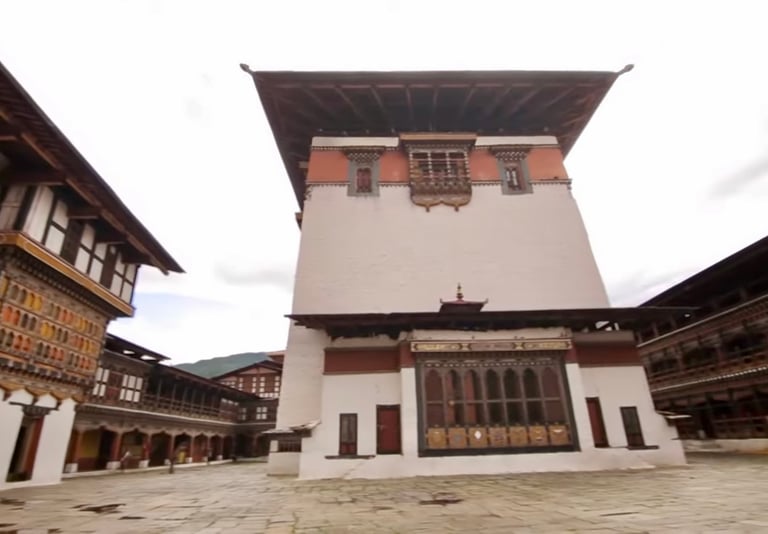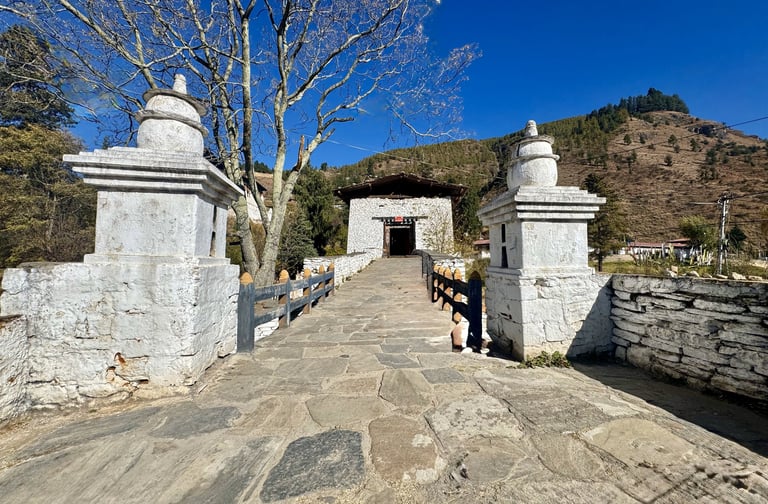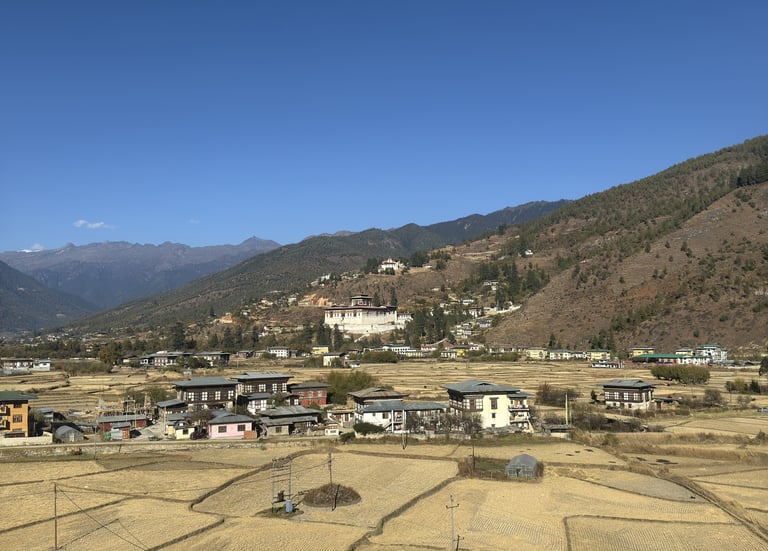
Paro Rinpung Dzong
A Gem of Bhutanese Heritage
12/6/20242 min read


Introduction
Paro Rinpung Dzong stands as a magnificent testament to the country’s rich cultural heritage and architectural prowess. Constructed in 1646 under the reign of Zhabdrung Ngawang Namgyal, the Dzong, which means "fortress on a heap of jewels," is not only an administrative center but also a vibrant monastic community that plays a crucial role in Bhutanese Buddhism.
A Historical Overview
Paro Rinpung Dzong was strategically built on a cliff overlooking the Paro Chhu (river), symbolizing the power and influence of the Zhabdrung, who unified Bhutan in the 17th century.
Travel Tips
Getting There: Paro Rinpung Dzong is easily accessible from Paro town, which is about a 15-minute walk. The best time to visit Paro is during the spring (March to May) and autumn (September to November) when the weather is pleasant, and the surrounding landscapes are incredibly vibrant. Respect the local customs and traditions by dressing modestly when visiting the Dzong and following photography guidelines within the religious areas.
Conclusion
Paro Rinpung Dzong is more than just a monument; it is a living piece of Bhutanese history and spirituality. Its blend of stunning architecture, rich history, and cultural vibrancy make it a must-visit destination for anyone traveling to Bhutan. So, the next time you plan your Bhutan adventure, the Paro Rinpung Dzong is on your bonus point if you travel by Paro international airport to experience the beauty and serenity of our remarkable country.
This structure serves as a critical point in Bhutan's history, marking a period of strength and stability. Originally, it was constructed to defend against invasions from Tibet, showcasing the impressive defensive strategies of Bhutanese architecture.
Cultural Significance
Paro Rinpung Dzong is not only a historical monument but also a significant cultural hub. The annual Paro Tsechu, an important festival celebrating the teachings of Guru Rinpoche, attracts thousands of locals and tourists. During this festival, vibrant masked dances and cultural performances fill the courtyard, creating an atmosphere of joy and spiritual reflection.
The Dzong also serves as a school for monks, ensuring the continuation of Buddhist traditions and teachings. Visitors have the unique opportunity to observe young monks engaging in their daily studies and rituals, providing a glimpse into the spiritual life within the Dzong.
In 1907, the Dzong was remodeled, allowing its beautiful wooden structures and intricate motifs to flourish. The dzong has withstood the test of time, enduring natural disasters and maintaining its essential roles in both governance and religion, with many ceremonies, including the famous Paro Tshechu, held here annually.
Architectural Marvel
The architectural brilliance of Paro Rinpung Dzong lies in its elaborate woodwork and intricate murals. The dzong is divided into various sections, including the administrative offices and monastic quarters. Visitors can explore the spacious courtyard, surrounded by intricately carved wooden galleries and stunning religious paintings.


Prominent features include the impressive central tower, or “Utse,” and the massive prayer hall adorned with beautiful thangkas (Buddhist paintings). The murals depict important deities and historical events, creating a captivating narrative that transports visitors back to Bhutan's spiritual past.



